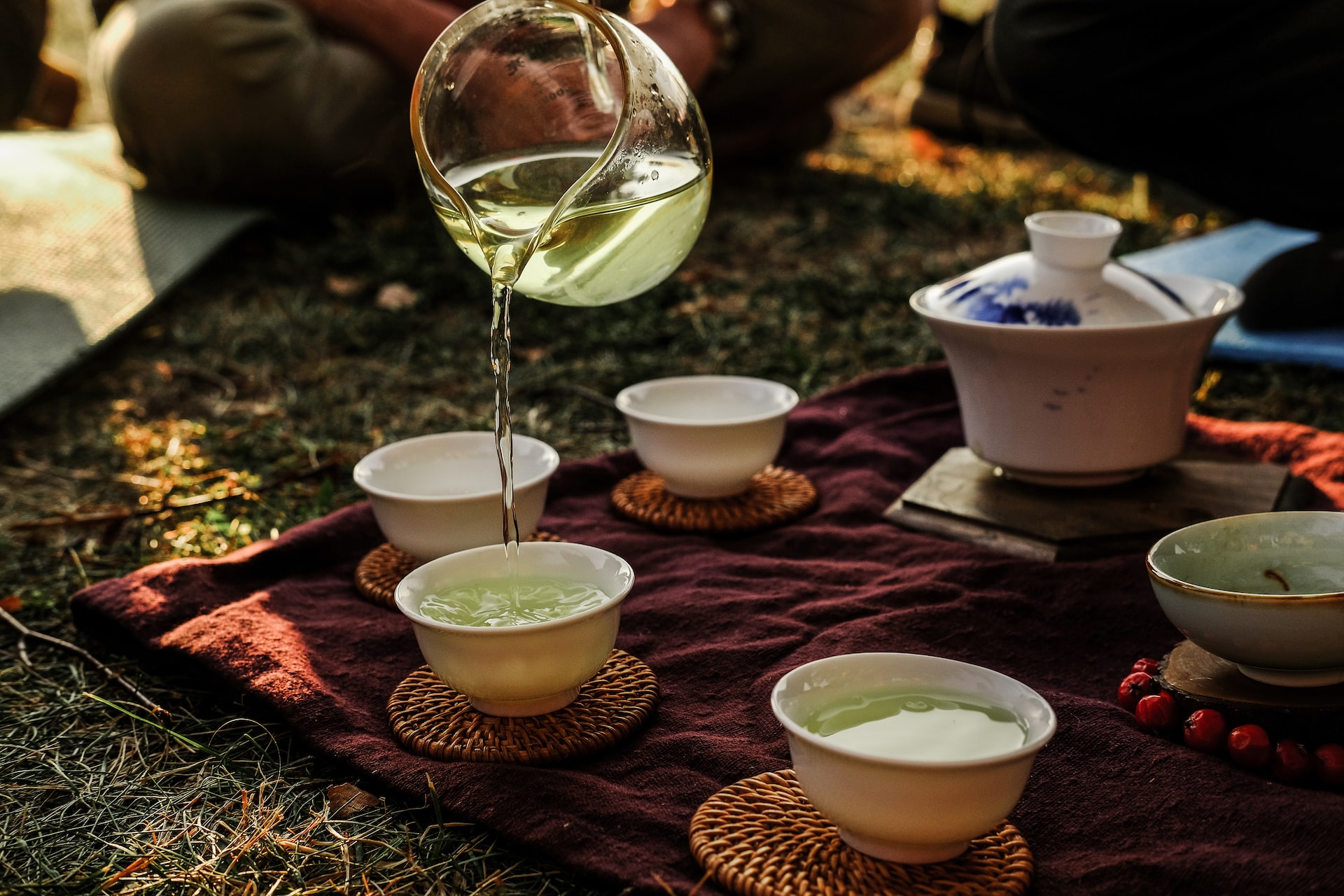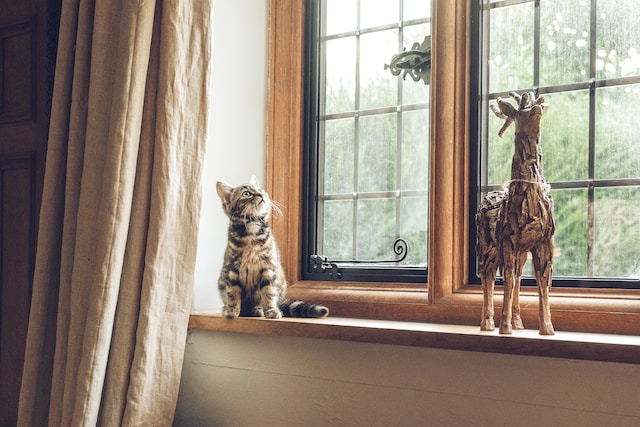Tea is the most consumed beverage in the world (well, aside from water, of course). This fact might come as a surprise to many Americans — coffee had been a staple of American society before the country was even a nation, dating back to the Boston Tea Party when they switched out tea for coffee to protest against British rule. Even if you’re a lifelong coffee drinker, the world of tea is vast and versatile, with many different varieties to explore and enjoy. This guide will help you get started with the vast world of tea at home. We’re not trying to pull you away from coffee, but pushing tea into your life instead. Try it out — there’s room for both beverages in your life!
General Overview
Health Benefits
People have drunk tea for its various health benefits for thousands of years, and different teas have different advantages. Tea has a long history of use as a medicinal beverage in China for balancing body energy, regulating body temperature, and stimulating the mind. Thanks to the Chartered Companies opening trade routes with the East, tea made it to Europe in the 17th Century, where it was offered as “Cha” by apothecary shops for its tonic and digestive-enhancing properties.
The truth is that, according to many studies, tea is loaded with antioxidants and other very beneficial natural chemical compounds like catechins, L-theanine, caffeine, and polyphenols. Due to some of these properties, considering drinking tea regularly could enhance our sense of peace and boost our energy.
Ginger and peppermint infusions, for example, are used to soothe nausea, constipation, and upset stomachs. If you have insomnia, infusions with chamomile, valerian root, or passionflower may help you drift off to dreamland. Some infusions have more long-term health benefits as well: there’s evidence that hibiscus infusions can help improve liver function, lower blood pressure, and even prevent the formation of kidney stones.
Difference Between Tea and Tisanes
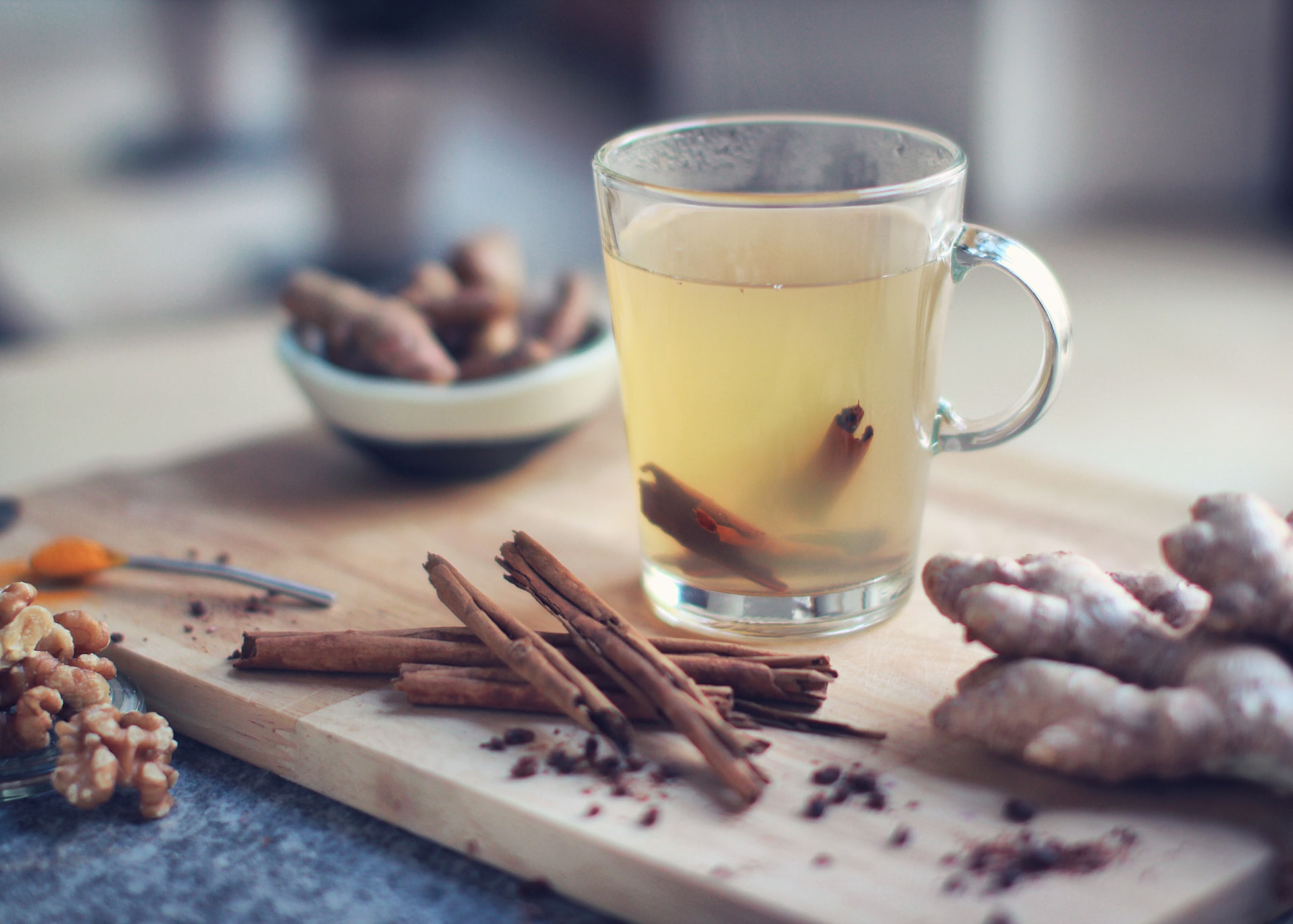
If you go to a supermarket or look at a restaurant’s or a café’s menu, you will very often see herbal, flower, bark, spice, root, fruit, or even grain infusions labeled under the same category as tea. You may have heard tisanes referred to as “herbal teas” or “botanical teas.”
“Tea” has been widely used as a generic term for almost any beverage that requires steeped in hot water. Nevertheless, this isn’t technically correct. The only “true teas” are made with the Camellia Sinensis plant. The term “tisanes”, on the other hand, refers to infusions made with any other plant. As a general rule, tisanes don’t contain caffeine, except for Yerba Mate (a very popular South American plant).
Short Brew vs. Long Brew + Whole Leaf vs. Tea Bags
In the world of tea, there are different methods of brewing tea, but there are two which are the most popular, and the differences between them are pretty notorious.
In the eastern part of the planet, people usually brew their tea with several short infusions using the same batch of leaves, going from 15 to 30+ seconds depending on the type of tea and the number of times the tea has been brewed. Usually, the first infusion is the shortest, and every time the tea is re-brewed, there’s an increase of about 5 seconds in the brewing time. This kind of brewing is usually made with whole leaf tea and allows the drinker to experiment with the tea’s different stages, flavors, and aromas with each infusion. This tea is often referred to as Specialty tea. Teas from farmers who specialize in specific types of teas and grow teas in small batches.
The reason short brewing is done with whole leaf tea is that the speed it takes for water to penetrate the membranes of the leaf and extract the flavor and aroma compounds is slower than if the leaf was broken; this makes the tea last longer and creates a sensitive experience, since it changes from brew to brew.
On the other hand, the western style of brewing tea, the one most of us know, is much simpler. Take a pre-heated recipient, add the tea and hot water and let steep for 3-5 minutes. This kind of brewing is done using tea bags or loose-leaf tea, but the tea leaves are usually more broken. This tea is often referred to as commodity tea. These are mass-produced, machine-picked, and processed teas.
One of the pros is that brewing tea like this is very convenient and cheap; the cons are that many times, these teas come with tea dust which can make your beverage very bitter and astringent (this is why some people drink it with milk or cream); flavor isn’t complex and if stored for long, it can become stale very quickly. Also, Since the tea leaf is broken, there’s more leaf surface in contact with the water, penetrating the membranes much faster, extracting most of the flavor and aroma compounds at once, creating a very strong infusion. These teas cannot be re-steeped because the resulting brew lacks flavor and aroma since most of it was extracted from the leaves in the first infusion.
Tisanes, in contrast, can take 15-30 minutes, depending on the herbs used; they should also be brewed anywhere between 175 to 212 F. If you’re planning on drinking your tea iced, however, a long brew is recommended. In a long brew, you steep the tea for 12 hours at a much cooler temperature — anywhere from around room temperature to fridge temperature.
Scented Teas & Tea Blends vs. Pure Teas
As stated earlier, true (or pure) teas are made from the camellia sinensis plant — which includes green, black, white, oolong, yellow and pu-erh teas. Blended teas take pure teas and mix them with other ingredients such as pieces of fruit, flowers, or oils to give them a more flavorful or complex taste. Scented teas, on the other hand, are sort of a medium between tea blends and pure teas. Other ingredients are added to pure teas during the production process so that the teas take on their scent and are then removed before being sold — often multiple times. This way, they become as aromatic as possible. The downside is that sometimes tea producers disguise the low quality and lack of flavor and aroma by blending the tea or by adding oils.
How to Choose or Source Your Tea? Use the SCOPE Method.
Now, let’s discuss the steps to follow in order to find high quality tea. To get the best tea, it’s essential to know some basic information about it. Scope-ing your tea is like reading its bio. But what exactly is the SCOPE Method?
Well, it’s a simple 5 step analysis developed by youtuber and Tea Master Don Mei, owner of Mei Leaf, a famous tea house in the heart of the Camden Town district in London, England.
SCOPE is an easy-to-remember acronym in which each letter stands for a piece of specific information to take into account at the moment of buying tea:
Season (When was it produced; Year and time of the year)
Cultivar (Variety of tea plant)
Origin (Where was it produced; usually the country of origin, region, name of a mountain or valley, the city or village, and sometimes the farm)
Picking (how it’s made; a bud and a leaf, a bud and two leaves, two leaves and stem, etc.)
Elevation (how high was it grown; this helps understand the weather conditions it was grown under).
Specialty tea producers often offer this sourcing information, while mainstream commercial teas’ information is frequently very hard to track.
Chinese Tea
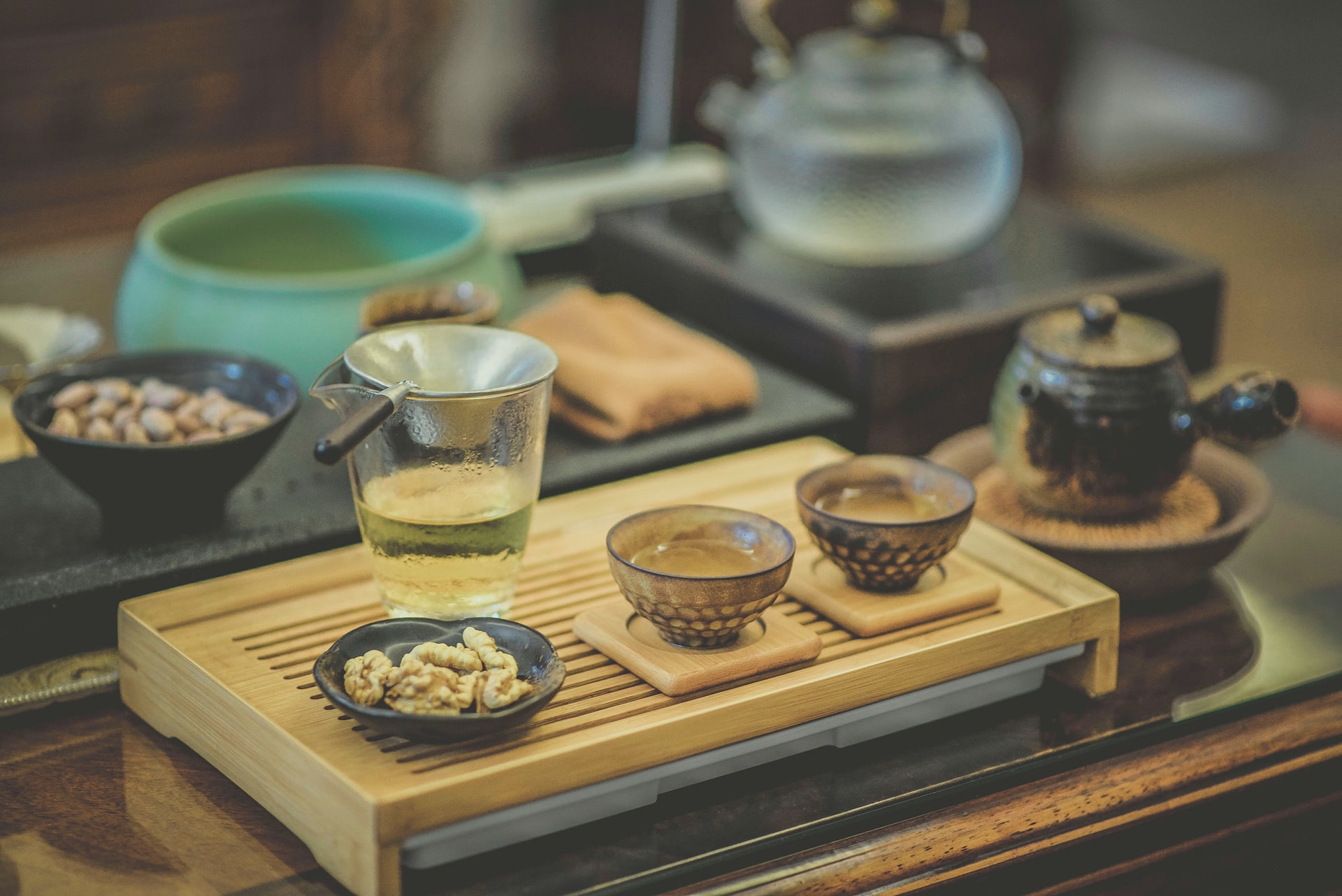
Cha Dao & Gongfu Cha Style Tea
Cha Dao translates into English to mean “the way of tea,” with “cha” meaning tea and “dao,” referring to the Chinese concept of how the universe naturally unfolds and the way that humans can achieve a life of balance in accordance with those universal laws. Gongfu Cha literally translates to “kung fu tea,” and refers to the art of brewing tea skillfully and with discipline. Like the martial art of kung fu, Gongfu Cha requires focus, mindfulness, and repetition to develop skills.
Tea Etiquette
Etiquette is crucial in Chinese tea, including how guests are seated (by the level of importance to the host), bowing and expressing gratitude to the host before the first steep, and tapping two fingers on the table to thank the tea server. It is also important not to spill the tea and enjoy it slowly in order to savor it.
Teaware
Traditional Chinese tea also involves some specific teaware and materials. The brewing vessel is usually a porcelain or Yixing clay teapot but is also sometimes brewed in a lid-covered bowl called a gaiwan. A specific tea pitcher called a gong dao bei or cha hai is also used to ensure a consistent flavor. In addition to the tea cups used for sipping the tea, there are also smell cups made in a unique shape to allow you to best capture the aromatics of the tea. Many tea drinkers also have a tea pet — a small clay figurine usually cast in the form of historical figures or mythical creatures — as part of the ceremony. Tea is poured over tea pets for good luck.
All the mentioned elements are set on top of tea tray, commonly made of bamboo, with a gridded lid on top and water catcher tray below.
Types of Tea
Even though they are all made from the same plant, many different types of pure teas have a variety of flavors due to different processing and growing procedures.
White teas are picked when young tea buds are enclosed in new leaves, which results in a soft and subtle flavor. It is called white tea due to the white silver-ish hairs covering the buds. These teas are the less processed of all, therefore, the closest to the original natural state. It’s also been said about them to carry the least amount of caffeine among other types of teas since they are not oxidized (they can actually be a very little oxidized; somewhere between 5-10%). Nevertheless, this claim is not quite accurate. Caffeine is potentially more present in the tender tip of the leaves (the buds) since it is used by the tea plant as a natural insect repellent.
Like white teas, green teas are very little processed; They’re heated right after being picked, so that the essential oils in the leaves don’t oxidize the tea. Opposite to popular belief, green teas have a significant amount of caffeine, but its effect is balanced with the effect of theanine, which gives the brain a focused and relaxed feeling.
Oolong teas are partially oxidized, so they retain the brightness and freshness of green tea while adding the bold, complex flavor of black tea.
Black teas are the best choice if you’re looking for caffeinated tea. They’re entirely oxidized, which results in high caffeine content and a full-bodied flavor.
Pu-erh tea is a fermented tea made from either green or black tea and can be processed “raw” (sheng) or “ripe” (shou). Raw pu-erh tea has a broader range of flavors but needs to age much longer in fermentation. Ripe pu-erh tea doesn’t have to be aged as long but has a less complex flavor. This tea, along with some types of white teas, can come in compressed tea bricks, tea nuggets, tea pearls or tea cakes forms.
Importance of Water & Best-suggested Temperatures by Type of Tea
The water itself is also vital in Chinese tea. Distilled water is not recommended, as it lacks minerals and can result in a “flat” brew. Locally sourced spring water is best, but if it is not available, bottled spring water will do. You can alternatively add some pieces of bamboo charcoal to the water container you will use for brewing your tea. First give the charcoal a rinse with tap water and then let it rest for a few hours; after this, the texture and taste of the water will be perfect for brewing tea.
Different types of tea also require different water temperatures to maximize the flavor.
- Green tea: 167ºF – 185°F (75ºC – 85ºC),
- White tea: 185ºF – 194°F (85ºC – 90ºC)
- Oolong tea: 194ºF – 212°F (85ºC – 100ºC)
- Black tea: 203ºF – 212°F (95ºC – 100ºC)
- Pu-erh: 194º – 212°F (90ºC – 100ºC)
Brewing the Tea
To brew tea Gongfu-style, its important to have hot water available at all times. First, pre-heat all the teaware with hot water and after waiting a few seconds, discard the water into the tray. Then add 6-8 grams of whole tea leaves in your teapot or gaiwan and add a little water; immediately after, stir it with caution (we don’t want you to get burnt fingers!) with a circular movement. After a good 5-8 seconds, discard the water again. This is called “Tea rinsing”, and it’s done to warm up the teaware, remove any dust or impurities, and to ‘wake-up’ the tea leaves.
Then, pour hot water into your vessel again and wait for a few seconds (The amount of time and temperature of the water will vary depending on the type of tea; brewing time usually starts at 20 seconds). Next pour the liquid into the tea pitcher through a small-mesh tea strainer.
At this point, the tea is ready to be served; however, you can pour tea into a smelling cup an then empty it to appreciate the aroma profile. But this is completely optional.
If you’re having a solo tea session, you can go ahead and pour tea from the pitcher into a cup and drink. If you’re hosting a tea session with guests, serve the honor or the eldest guest first and then the rest of your guests. You can do as many brews as the tea leaves will let you. Some teas can hold up to 6-8, but highest quality teas can hold up to 12+.
Japanese Tea
Chadō & Chanoyu
Like China, Japan is also rich in tea history, and they have their own tea ceremony that’s usually referred to as chadō or chanoyu (though these are subtly different terms in Japanese, you can mostly use them interchangeably). In essence, Japanese tea ceremonies can be explained with the phrase ichi go ichi e which translates to “each moment only occurs once.” Chadō is all about being present and mindful and enjoying the moment.
Matcha
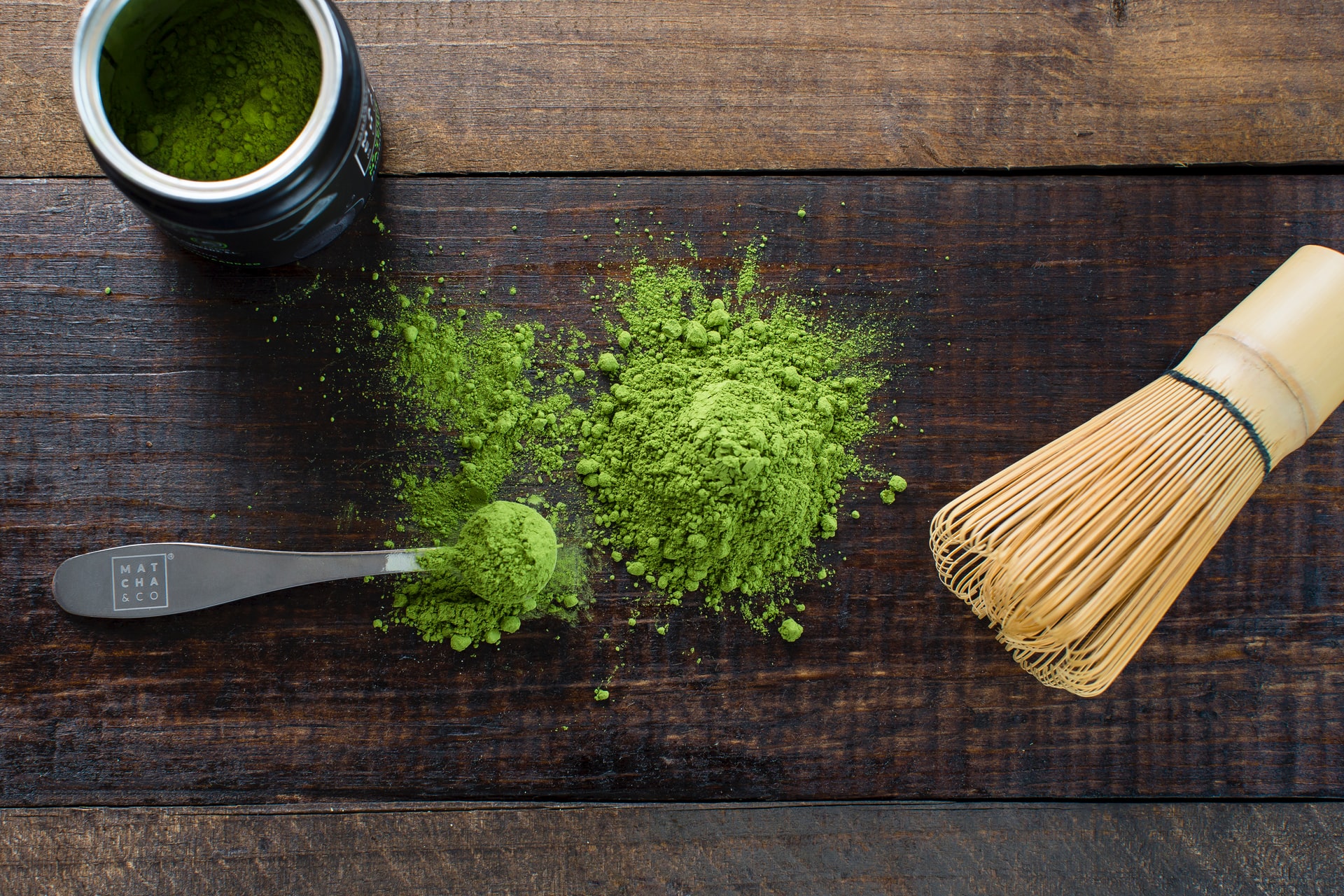
At the center of Japanese tea ceremonies is matcha tea, a finely powdered form of green tea that’s higher in theanine and caffeine. Matcha is distinctive because it is mixed into liquid such as water or milk rather than being brewed in tea bags. There are several grades of tea, but the highest grade for matcha is the ceremonial grade. Matcha is often considered as a superfood due the high amount of nutrients and compounds. Also, matcha is the best way of seizing green tea’s beneficial properties since the entire (powdered) leaf is being consumed.
Types of Tea
Japanese teas are mostly green tea, but a few black and oolong teas are also in the mix. Here are the most popular:
Sencha is one of the most popular teas in Japan. It has a very refreshing, earthy flavor and is often drunk cold in cans or bottles. In contrast, Gyokuro is an extremely rare and fancy tea that is hand-picked and difficult to produce. It has a sweet flavor and is not commonly drunk by everyone due to its price.
Hojicha tea is roasted to remove much of the caffeine and catechins, resulting in a mild, hydrating brew that’s friendlier on the stomach.
As for non-green teas, one black tea that has been gaining popularity in Japan over the last 100 years or so is wakoucha. Though 100 years may seem like a long time, Japan has been drinking tea for centuries, so it’s the new kid on the block in comparison.
Japanese Teaware
A matcha tea set contains a few specific components. Rather than a teapot, matcha is brewed in a bowl called a chawan. A bamboo spoon called a chasaku is used to portion the matcha from your tea jar, with each scoop usually about one gram. In order to properly mix and froth the matcha, it’s best to use a bamboo whisk called a chasen.
Kyusu teapots are specifically used for brewing green tea, Japan’s most popular type of tea. Since green tea can become bitter the longer it is steeped, Kyushu teapots are shorter and smaller than regular teapots so that the tea can be drunk before it gets over-steeped.
A shiboridashi is the japanese equivalent to a chinese gaiwan; they’re usually flatter and shorter than a gaiwan.
Tetsubins, on the other hand, are cast iron teapots used to brew sencha tea. The cast iron heats the tea quickly and keeps it hot for longer than porcelain or clay teapots.
Western Tea
British Tea
In the western world, Britain is probably most known for being tea drinkers. In fact, “tea” refers to more than just a drink, but a meal in and of itself!
High Tea & Low Tea
Though “high” tea might sound like it refers to an aristocratic or high-class practice, the opposite is actually true. High tea is a hearty meal eaten by the middle class after work, usually between 5 and 7 PM. The term “high” comes from eating this meal at high dining room tables. In contrast, “low” tea gets its name from the low coffee tables used by the rich. Low tea is what you probably think of when you think of stereotypical British “tea time.” Rather than being a heavy meal, low tea is more of a midday snack consisting of lighter fare like small sandwiches and cakes. Both meals include copious amounts of tea, of course!
Pairing
Depending on what you are serving with tea, you can pair different teas with different foods. For example, Earl Grey tea’s bold, citrusy flavor goes well with sweet, more robust desserts. Fruit-based desserts are often paired with chamomile tea, as its apple-like flavor compliments them well. For fresh fruit on its own, you can pair it with green tea due to its earthy, more leafy flavor.
Western Brewing Methods
Besides the mainstream teabags, there are other convenient brewing methods in the western world. Some of them are:
Tea Balls or Infusers
Basically a reusable metal or silicone version of a tea bag. Some of these have more space for the water to flow between the leaves, which makes the flavor profile more complex.
Mug Strainer
Mug strainers are also convenient because you can brew the tea right in your cup and then remove the strainer once it has steeped.
French Press
French presses are very common in western households for brewing coffee, but you can also use them for brewing loose leaf tea. The same brewing method applies to tea — simply use the plunger to push down the leaves after it has steeped.
Cold Brew
Cold brewed tea takes more preparation, as it needs to steep for around 12 hours — but the result is a less bitter brew.
Modern Tea
Iced Tea
Lots of iced tea is brewed cold, but in a pinch, you can also ice your hot tea once it’s done steeping. It’s an extremely popular beverage for hot summer days.
Bubble Tea
Bubble tea -also called Boba Tea– originated in Taiwan but has since gained popularity in the western world. There are several different varieties, but the defining factor is the chewy tapioca balls suspended in the brew.
Kombucha
Kombucha is a black tea fermented to become naturally carbonated. Many people drink it for its probiotics. You can find DIY kombucha kits online.
Tea in other regions of the world
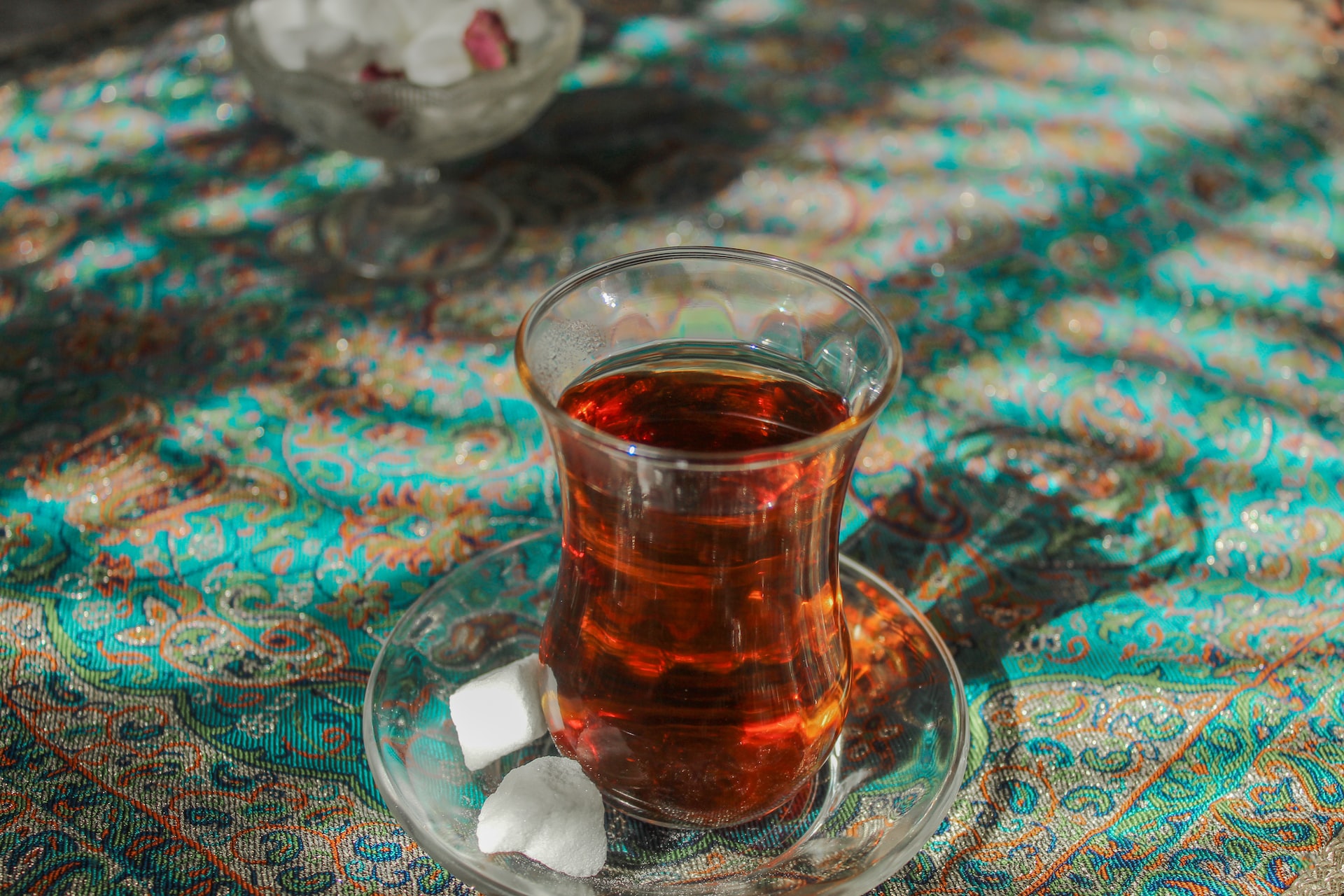
Indian Tea
The most well-known Indian tea is perhaps Masala Chai tea. Chai tea is made by boiling black tea in milk, sugar, and aromatic spices, such as peppercorns, star anise, fennel seeds, ginger, nutmeg, mace spice and cardamom pods. But there’s also a very famous black tea from the Darjeeling region known for its delicate flavor and aroma; because of it features it’s been nicknamed the “Champagne of Teas”.
Turkish Tea
Turkey has the highest per capita tea consumption rate in the world and, like most countries, has its own rituals and ceremonies. Turkish tea is is the first thing you will be offered when entering an indoors space like a home or a business. It is often used for its medicinal benefits, such as coughs and balancing blood sugar. In order to brew Turkish tea, a double kettle (called “çaydanlık”) is required, water is poured into the lower kettle; after reaching boiling point, loose tea and hot water from the bottom kettle are put on the top kettle and let in the stove at low fire for several minutes. A very concentrate brew is then poured into traditional Turkish tea glasses and diluted with hot water from the lower kettle, according to each persons taste. You can have it sweetened or unsweetened.
Korean Tea
Like many eastern countries, Korea also has a rich history of tea. Like Japan, green tea (or nokcha) is the most popular variety in Korea. Another popular tea is Hwang cha, which is similar to oolong tea in that it’s partially oxidized to make it a cross between green and black tea — but it has a precise oxidation process that gives it a unique flavor.
Taiwanese Tea
Though Taiwan is probably best known for bubble tea in the western world, they also have many more traditional tea varieties. One famous type is high-mountain oolong tea, which refers to oolong teas grown at an elevation of 1000 meters or higher. It produces a refreshing, fresh, floral flavor.
General Recommendations
Water Heaters
Though traditional stove kettles have been used for many years and will suffice in a pinch, they’re not the most accurate in terms of water temperature — and since different types of teas require different temperatures to get the most out of them, it’s recommended to get something with a little more precision. Electric kettles can provide this precision, giving an accurate temperature reading down to the degree. Many even have preset programs for different types of tea and other beverages to add even more ease and accuracy.
Tea Storage
To keep your tea fresh, you’ll want to ensure that they’re stored in an airtight, food-safe container. A good rule is that if the storage container can hold liquid without spilling, it can keep the tea as fresh as possible. Light, heat, and moisture can also cause the tea to degrade, so you’ll want to store it in a cool, dry, and dark place and in an opaque container if possible. Lastly, tea can absorb odors easily, so you’ll want to keep them away from anything with a strong aroma, such as your spice cabinet.
Teaware Cleaning
The first rule of teaware cleaning is never to use soap. Teaware is delicate, and detergents can leave behind unwanted flavors. In most cases, rinsing with hot water should be enough. If your tea set requires a little more tender love and care, you may need to use a tea cloth to clean it. You should only use your tea cloth to clean your teaware.
Compost Used Leaves
Wet tea leaves can also mold very fast, so removing them from your teapot or other teaware as quickly as possible is important. One great thing about loose leaf tea is that since it makes a great fertilizer, you can compost it, leaving behind very little waste.
Bonus Fun Facts About Tea
- Tea bags were invented by accident when New York tea merchant Thomas Sullivan sent samples of his teas to customers, and some of them put the bags directly into the teapot by mistake.
- Some teas, such as Da-Hong Pao, can cost over one million dollars per kilogram.
- You can actually get “drunk” from tea! Getting “tea-drunk” has to do with the combination of caffeine, L-theanine, and catechins (antioxidants) found in the plant.
Tea Sets as Decoration for Your Home
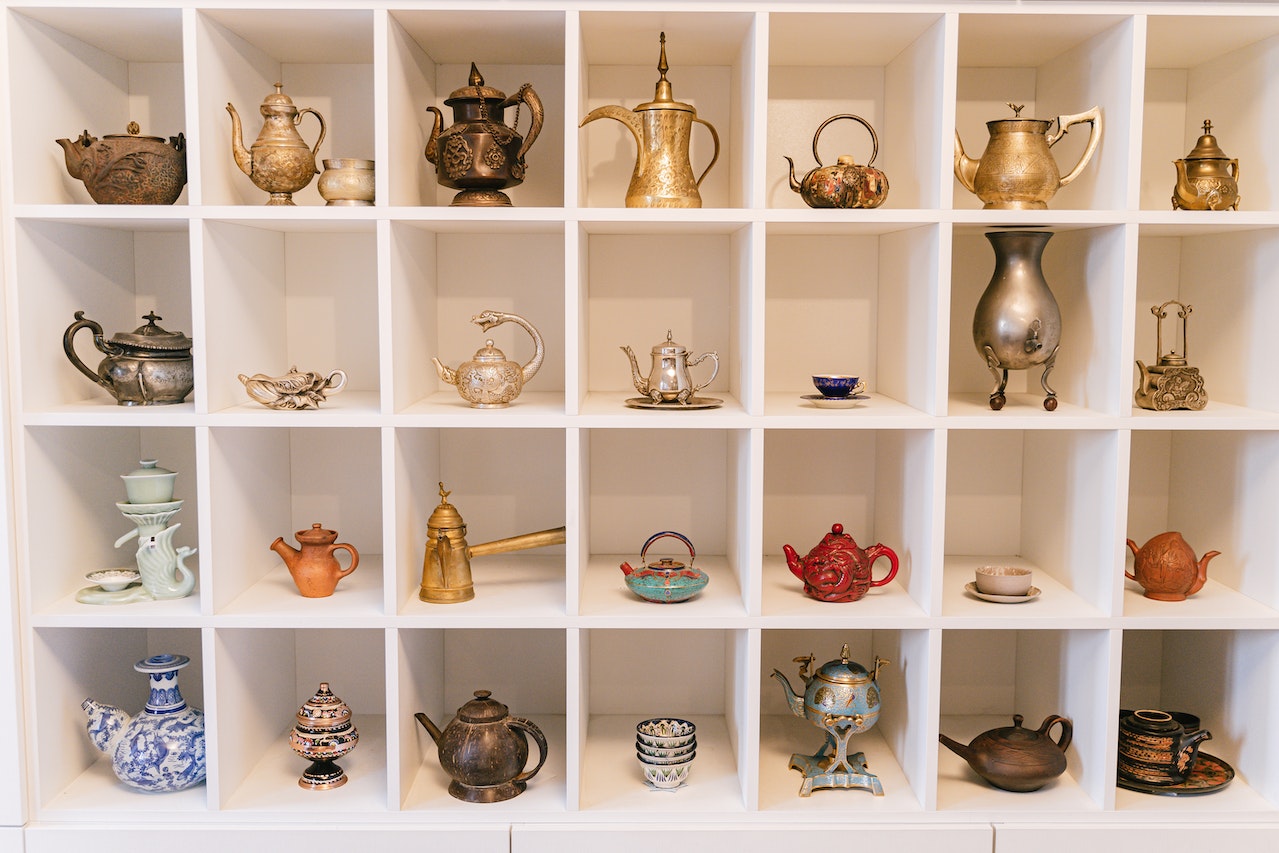
Many people love tea so much that they even utilize tea sets and pieces inspired by tea culture from around the world as decor. Like tea, it can invite a sense of calm into your home.
Zen-style Decoration
Named after the Zen sect of Buddhism, zen-style decoration is all about achieving balance, tranquility, and harmony. It’s characterized by more minimalist furniture and decor, often utilizing neutral colors.
Teaware Wall Display
A zen teaware wall display is a great way to showcase your love for tea and help create a tranquil atmosphere in your home. The tea represents balance and harmony, so having an actual tea set on display may help you visualize these feelings of zen and apply them to your life.
Tea Table and Seats
Zen-style tea tables are lower and closer to the ground, while the seats can be more modern-looking chairs or cushions to kneel on. If you’re looking to host tea parties of your own, tea tables and seats can be functional as well as aesthetic.
Wabi Sabi
Like Zen-style decor, Wabi Sabi-style decor is also inspired by Japanese philosophy. Wabi Sabi essentially means finding beauty in imperfections and came about as a reaction to the more lavish, maximalist trends that were popular then. Also, like Zen, Wabi Sabi is about keeping things minimalist but with more of an emphasis on nature. When it comes to teaware, this means that it uses basic, muted colors found in nature like green, brown, and gray. It isn’t always symmetrical or sculpted to perfection, meaning it may be rough or even chipped — and often, the potter makes it that way on purpose.
Victorian Style Décor
In contrast with the Zen and Wabi Sabi style’s minimalism, the Victorian style decor is more lavish to represent high taste and prosperity. Victorian tea sets, therefore, take on a more ornamental style, utilizing brighter colors and patterns. If you have a vintage or victorian home, or if you’re into victorian-style or cottage-style décor, a victorian tea set is a great complement to your room.
In Conclusion…
As the most popular beverage on the planet (that isn’t water), tea is enjoyed by people nearly everywhere — there is quite literally a world of tea to discover and enjoy. It’s well worth your time to explore tea from different countries and leave your comfort zone — you might find a new favorite!
